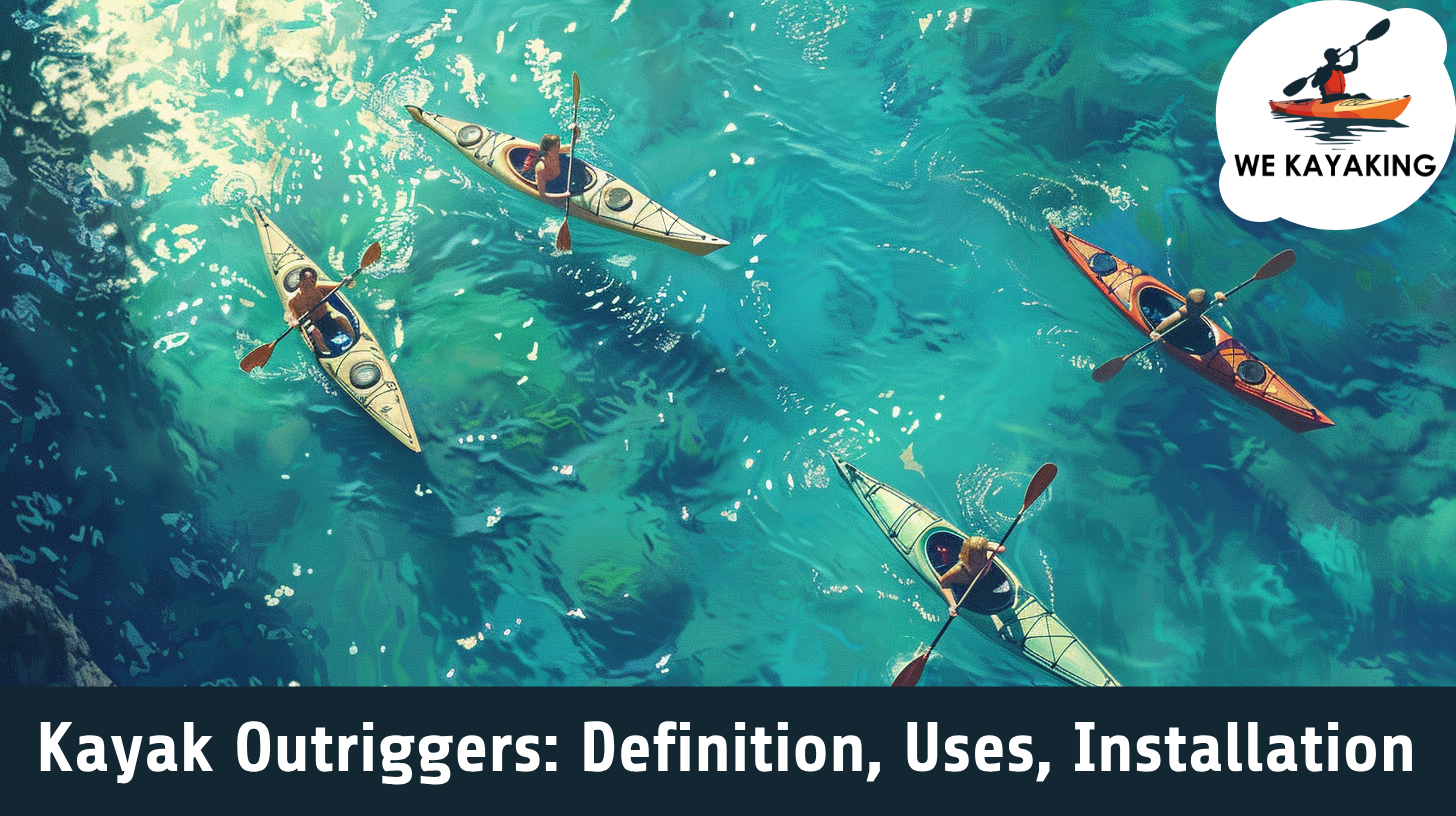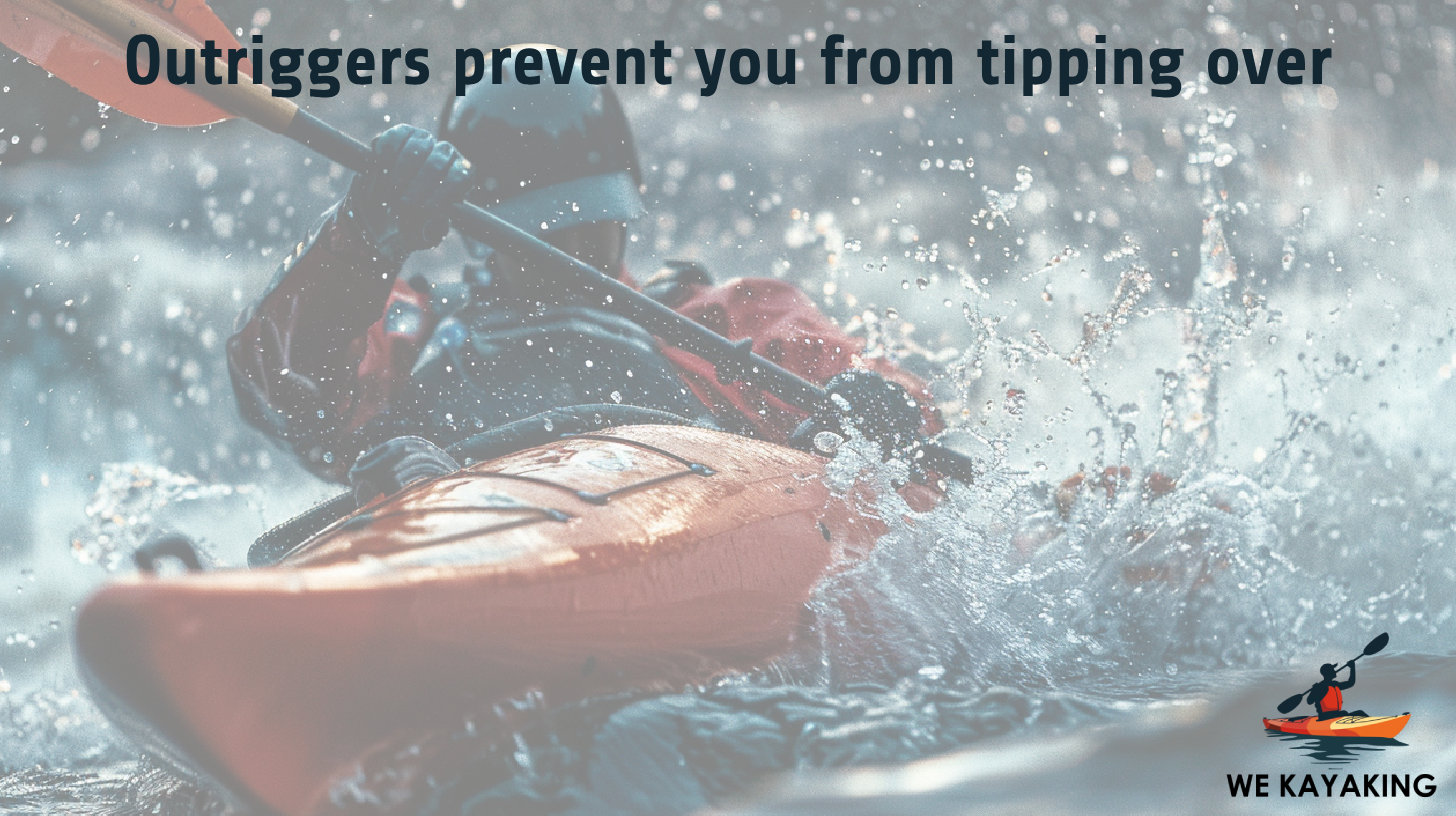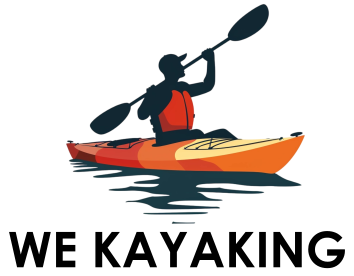
Kayak Outriggers: Definition, Uses, Installation
Kayak outriggers are crucial stability-enhancing attachments, comprising two secure pontoons affixed to a standard kayak’s aft section via a pole mechanism. These integrated floats significantly augment stability during water navigation, preventing capsizing. By providing buoyancy and support, outriggers effectively counteract the kayak’s tendency to topple, ensuring increased stability and security.
Kayak outriggers improve stability, enabling kayakers to navigate with enhanced confidence and comfort. Choosing the right outriggers involves precise considerations of factors like kayak size, material composition, and optimal placement for achieving maximum stability and security on the water.
Kayak outriggers are installed by utilizing a pole mechanism to fasten two small pontoons to a standard kayak. Outriggers are usually fastened to the rear of the kayak to increase balance and stability. For maximum water stability, ensure the outriggers are positioned evenly and the attachment is secure.
Table of Contents
What are kayak outriggers?
Kayak outriggers are attachments added to a kayak to provide stability and improve balance. They are designed to prevent the kayak from tipping over; this design is utilized in rough waters or activities like fishing or photography.
Kayak outriggers consist of two lateral arms, one on each side of the kayak, with floats attached at the end. These floats increase the overall width of the kayak, making it more stable and less prone to capsizing.
Kayak outriggers are between 30 to 36 inches (76 to 91.5 cm) long. They’re usually placed about three-quarters of the way toward the stern, just behind the seat. On average, outriggers weigh between 1 to 3 pounds (0.45 to 1.3 kg) each, but it’s best to check the specific specifications of the model to determine the exact weight. The shape of outriggers varies depending on the type of kayak and the intended use. Some common shapes include circular, oval, and V-shaped. The width of outriggers for kayaks ranges from 6 to 14 inches (15 to 35.5 cm), depending on the type of kayak and its intended use. Kayak outriggers are available in various colors, such as red, blue, green, yellow, and tan, among others.
What is the purpose of kayak outriggers?
The purpose of kayak outriggers is to provide stability and support when paddling a kayak. Stability maintenance is attained by adding extra buoyancy. Outriggers make the kayak more stable overall and less likely to tip. They contribute to reserve stability by preventing the kayak from leaning too far to one side.
Outriggers make it more difficult for the kayak to capsize, which is particularly beneficial for beginners or in challenging conditions. In the event of an unforeseen capsize, outriggers provide additional support for re-entering the kayak, especially for paddlers who find it challenging to perform a self-rescue. Kayak outriggers are designed to attach to the sides of the kayak to help prevent capsizing and maintain balance in varying water conditions.
Outriggers increase the kayak’s weight-bearing capacity, allowing for the safe transportation of additional gear or equipment without compromising stability. Outriggers enhance the kayak’s ability to maintain a straight course, particularly in windy or choppy conditions, by acting as stabilizing fins.
Do kayak outriggers prevent your kayak from tipping over?
Yes, kayak outriggers prevent kayaks from tipping over. Air filled design of the outriggers enhances the stability of the paddler and vessel. Although kayak outriggers decrease the chances of tipping over by 70%, this doesn’t mean they eliminate the risk completely.

Are Kayak outriggers used for training?
Kayak outriggers are used in training to give beginners a safe platform on which to practice balancing and paddling. These devices are essential to the stability training of kayaking. In addition to providing stability, outriggers boost confidence by lowering the chance of capsizing, which frees up paddlers to focus on honing their skills.
As beginners gain proficiency and become more comfortable on the water, outriggers can be gradually phased out, allowing paddlers to transition smoothly to more advanced kayaking experiences. In essence, kayak outriggers serve as essential training wheels, fostering a positive and empowering introduction to the world of kayaking.
Do I have to start kayaking with outriggers as a beginner?
No, it’s not mandatory to start kayaking with outriggers as a beginner. Whether or not to use outriggers depends on your personal comfort level, goals, and the type of kayaking you plan to do. With that said, it is a recommended option for those seeking enhanced stability and confidence in the water. Outriggers provide an added layer of balance, making it easier for newcomers to acclimate to the kayak’s initial instability.
What to do if kayak outriggers detach during kayaking?
If your kayak outriggers detach while you’re on the water, remain calm and assess your kayak’s stability. If it is safe to do so, retrieve the outriggers with care. If they are not reattachable or if trying to reattach them would be dangerous, paddle steadily and slowly in the direction of the closest shore.
A whistle or other signaling device should always be worn to request assistance. You should also always wear a personal flotation device, such as a life jacket.
Can kayak outriggers withstand a crash into the rocks?
Kayak outriggers are not designed to withstand crashes into rocks or other hard surfaces. The primary purpose of outriggers is to enhance stability and prevent capsizing in normal paddling conditions. If a kayak outfitted with outriggers collides with rocks, the outriggers will sustain damage, as they are often made from materials such as plastic, aluminum, or fiberglass, which is not resilient enough to withstand the impact.
It’s crucial to exercise caution and avoid situations where the kayak, with or without outriggers, collides with rocks or other obstacles. Paddling in rocky areas requires careful navigation, and the use of outriggers does not make the kayak immune to damage from collisions.
Do all kayaks have outriggers?
No, not all kayaks have outriggers. Recreational kayaks, optimized for calm waters, lack outriggers to prioritize maneuverability. Touring kayaks designed for longer distances enhance stability through design without the need for outriggers. Fishing kayaks incorporate outriggers for added stability during angling activities. Sit-on-top kayaks, popular for recreational use and fishing, often provide stability through a wider design.
The choice between a kayak with or without outriggers depends on individual preferences, skill levels, and intended activities. Those prioritizing stability, beginners, or those engaged in activities like fishing opt for kayaks with outriggers. Experienced paddlers or those focused on speed and maneuverability prefer kayaks without outriggers.
Is it possible to install kayak outriggers on any kayak?
Yes, it is possible to install kayak outriggers on any kayak. However, the ease and practicality of installation varies depending on the kayak’s design and features. When choosing a kayak, individuals interested in adding outriggers later should consider factors such as the kayak’s compatibility with aftermarket outrigger systems, available mounting options, and the impact on the kayak’s performance.
Some kayaks have specific models or designs that are more suitable for outrigger installation, while others require modifications or additional accessories. If you have bought outriggers specifically made for your kayak, installation should be simple. You must position the pontoons so that they do not obstruct your paddling technique when using any other type of kayak.
How to mount kayak outriggers?
Mounting kayak outriggers is a meticulous process that involves securing additional stabilizing floats to the sides of the kayak. Start by choosing outriggers appropriate for the model of kayak you plan to use and compatible with your intended paddling conditions.
Locate the designated attachment points on your kayak, which include pre-installed mounting points, deck lines, or specialized mounts.
To ensure even weight distribution, place the outriggers symmetrically on both sides of the kayak. After carefully following the manufacturer’s instructions, attach the outriggers using the included mounting hardware, such as brackets, screws, or bolts.
Tighten all hardware securely, employing the appropriate tools, and adhere to the recommended torque specifications.
For maximum stability, ensure correct alignment and make any necessary adjustments.
Certain outriggers have adjustable attachments, so you are able to position them however you like.
Make sure the outriggers are comfortable and effective with the new setup by giving them a thorough test in a controlled environment before getting out on the water. It’s advisable to practice entering and exiting the kayak and performing maneuvers to familiarize yourself with the kayak’s handling characteristics with outriggers attached.
Always refer to the specific instructions provided by the outrigger manufacturer for the most accurate and reliable guidance throughout the mounting process.
Do I need to drill holes to install kayak outriggers?
Drilling holes to install kayak outriggers is not a necessity. The need to drill holes for installing kayak outriggers depends on the specific design and mounting system of the outriggers you choose. Some outriggers are designed to attach to existing attachment points on your kayak without the need for drilling, while others require drilling to install additional mounting hardware.
What are kayak outriggers made of?
Kayak outriggers are made from hard-bodied polyethylene or inflatables. Inflatable outriggers are made from durable and lightweight materials such as PVC, vinyl, or similar synthetic fabrics. High-Density polyethylene (HDPE) is a popular choice for outrigger construction due to its excellent combination of properties, including durability, strength, lightweight nature, corrosion resistance, and suitability for harsh marine environments.
